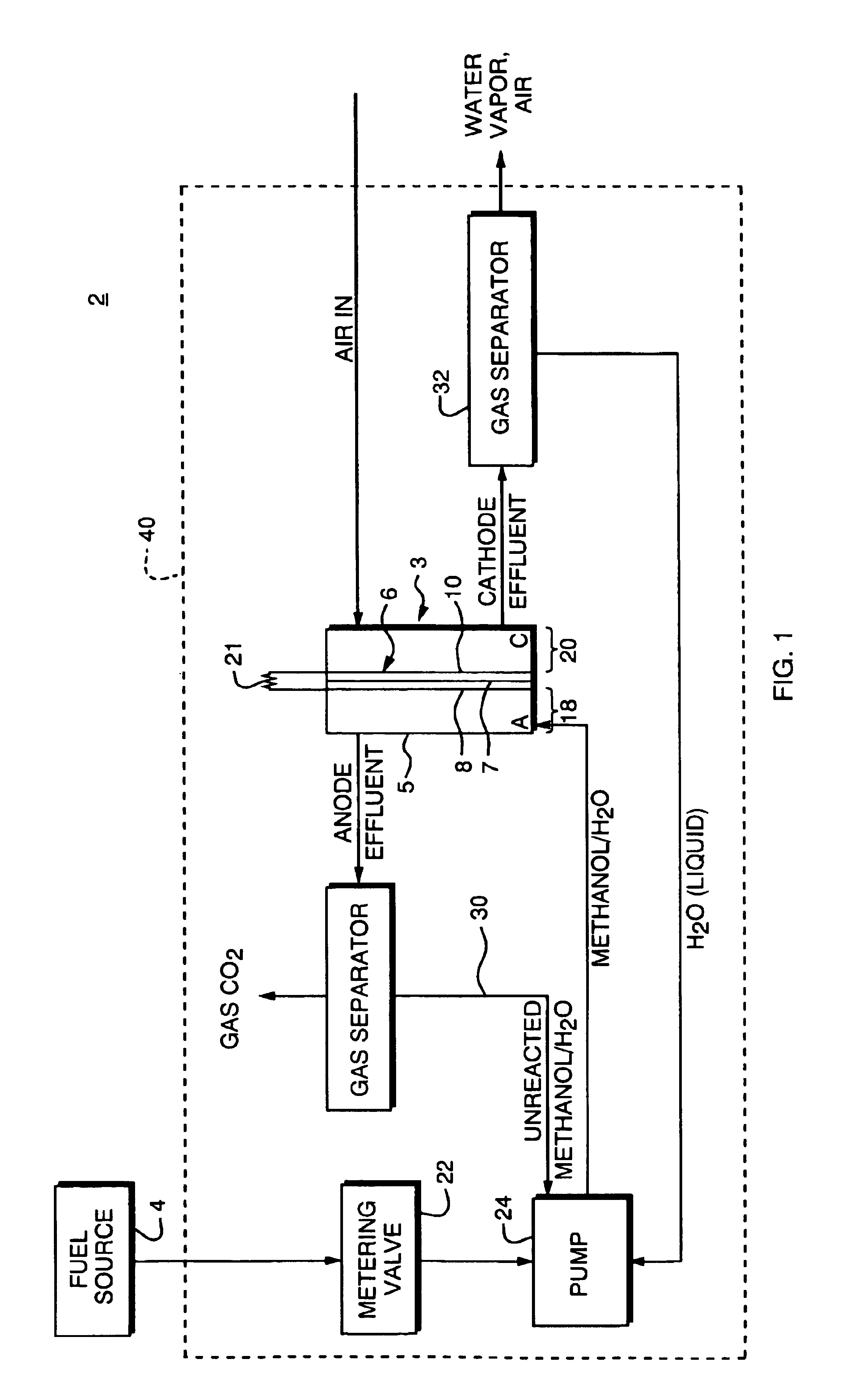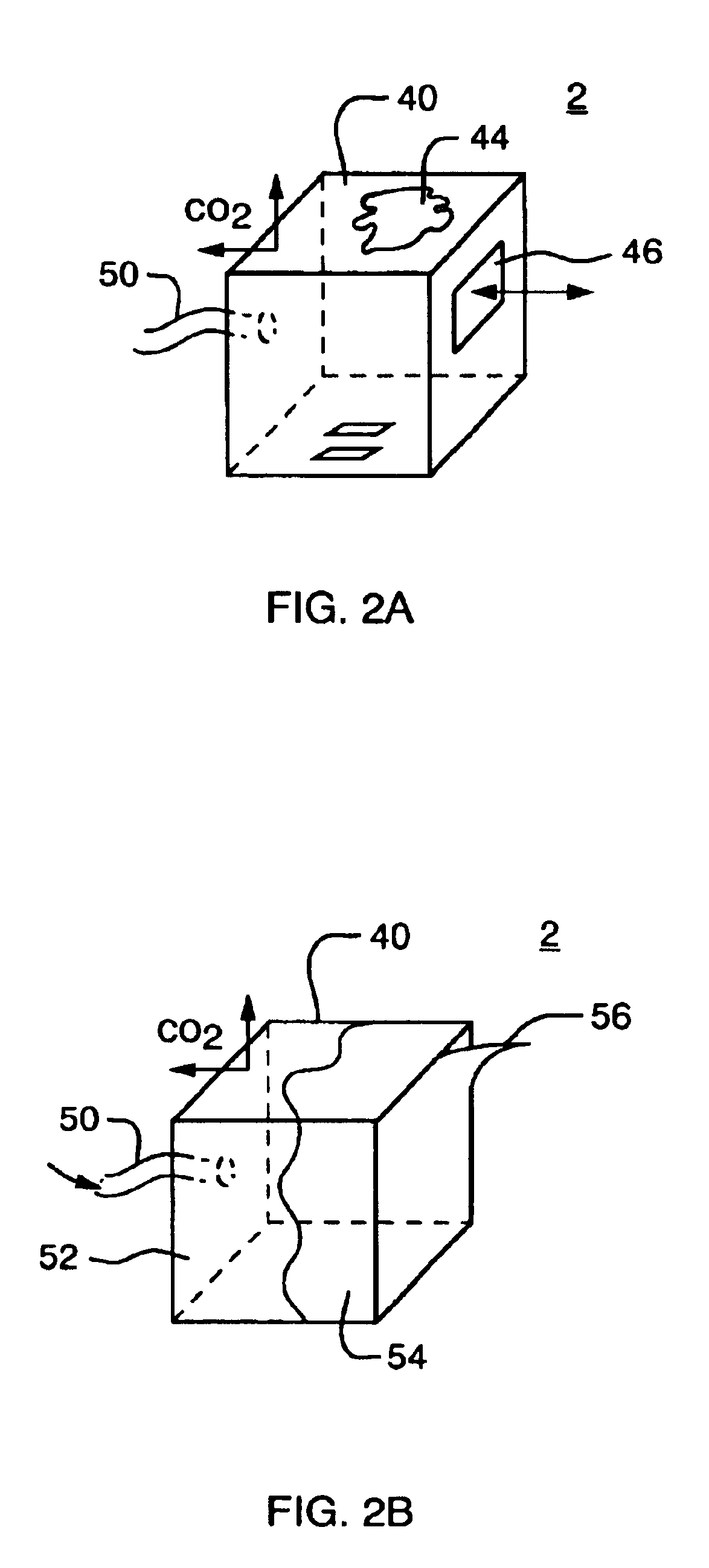Enclosed fuel cell system and related method
- Summary
- Abstract
- Description
- Claims
- Application Information
AI Technical Summary
Benefits of technology
Problems solved by technology
Method used
Image
Examples
Embodiment Construction
The present invention is an enclosed fuel cell system. The fuel used in the system may be any liquid carbonaceous fuel including, but not limited to, methanol, ethanol, and combinations or aqueous solutions thereof. For purposes of illustration, we herein describe an illustrative embodiment of the invention as it is employed in connection with a direct methanol fuel cell system ("DMFC"), with the fuel substance being methanol or an aqueous methanol solution. It should be understood, however, that it is within the scope of the present invention that the enclosed fuel cell system can be readily used with other fuels. Thus, as used herein, the word "fuel" shall include methanol, ethanol, or combinations or aqueous solutions thereof, and aqueous solutions thereof and other liquid carbonaceous fuels amenable to use in a direct oxidation fuel cell system.
For a better understanding of the invention, a direct methanol fuel cell system with which the invention could be employed will be brief...
PUM
| Property | Measurement | Unit |
|---|---|---|
| Power | aaaaa | aaaaa |
| Color | aaaaa | aaaaa |
| Shape | aaaaa | aaaaa |
Abstract
Description
Claims
Application Information
 Login to View More
Login to View More - R&D
- Intellectual Property
- Life Sciences
- Materials
- Tech Scout
- Unparalleled Data Quality
- Higher Quality Content
- 60% Fewer Hallucinations
Browse by: Latest US Patents, China's latest patents, Technical Efficacy Thesaurus, Application Domain, Technology Topic, Popular Technical Reports.
© 2025 PatSnap. All rights reserved.Legal|Privacy policy|Modern Slavery Act Transparency Statement|Sitemap|About US| Contact US: help@patsnap.com



